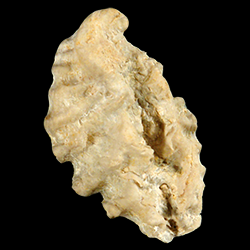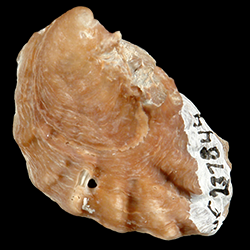
Dendostrea

- Phylum: Mollusca
- Class: Bivalvia
- Order: Ostreida
- Family: Ostreidae
- Genus: Dendostrea
- Common Name: Oysters
Overview
Dendostrea Swainson, 1835.
Key morphological features: Both valves generally convex and equal in size, ovate to dorsoventrally elongated in shape, with radial plications common, particularly toward the margin. Plications produce at least a partially crenulated margin. Shell exterior generally smooth, although occasional hyote spines occur on both valves. Hyote spines on the left valve can form clasping structures to aid in gripping the substrate (usually gorgonian or stony corals). Chomata are present on both sides of the hinge on the left valve and occasionally extend all the way to the ventral margin on the right valve. Source: Stenzel, H.B. 1971. Oysters. in Cox et al., eds., Treatise on Invertebrate paleontology, Part N, Mollusca 6, Volume 3. The University of Kansas and Geological Society of America. 272 pp.; Harry, H.W. 1985. Synopsis of the supraspecific classification of living oysters (Bivalvia: Gryphaeidae and Ostreidae). The Veliger 28(2): 121-158.
Geological range: Miocene to Recent (source: Stenzel, 1971).
Geographic distribution: A distributional map for modern Dendostrea may be accessed from OBIS. A distributional map for ancient Dendostrea may be accessed from the Paleobiology Database.
Diversity: There are 7 recognized living species of Dendostrea (WoRMS, unvetted). The Paleobiology Database recognizes 8 fossil Dendostrea species (unvetted).
Paleoecology: Dendostrea are sessile, filter-feeding bivalves that live permanently attached to hard substrates, predominantly gorgonian and stony corals. Dendostrea predominantly inhabits tropical and subtropical latitudes and occurs in shallow subtidal habitats. Clasping morph predominates during growth on narrow gorgonian branches.
Phylogenetic status: Paraphyletic. The recent molecular phylogenetic analysis by Salvi et al. (2014), and references therein, support the paraphyly of the genus Dendostrea.

